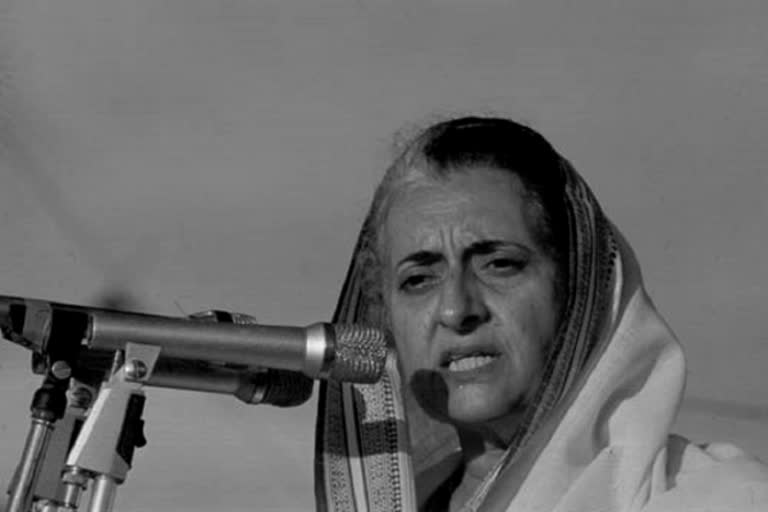Hyderabad: With a population of over 130 billion, India is considered the modern world's largest democracy. India has been a federal republic since 1950, governed in a democratic parliamentary system. The people of the nation have kept the democratic spirit alive by turning up at every election to vote and elect leaders to represent them.
Although the country is seen by many as a shining example of democratic values, the country's seen darker times as well. A past that still haunts us to this day and is a glaring example as to why we should defend the democratic values upon which this nation was built.
45 years ago, in 1975, India saw its darkest phase when the then Prime Minister Indira Gandhi declared a state of emergency across the country. The emergency was issued by President Fakhruddin Ali Ahmed under Article 352(1) of the Constitution and lasted 21 long months beginning 25th June 1975 and going on until 21st March 1977.
On the evening of June 25th 1975, JP Narayan called for a civil disobedience campaign to force the resignation of the Prime Minister. In response, the authority of the maintenance of Internal Security Act was used in the early hours of June 26th to arrest more than a hundred people who opposed Mrs Gandhi and her party. People arrested included JP Narayan, Raj Narain, Jyortimoy Basu (communist party-marxist), Samar Guha (president of the Jana Sangha).
Also read:Emergency was a mistake: Rahul
What led to the decision
One of the initial events that led to Indira Gandhi imposing the emergency was the Navnirman Andolan that started in Gujarat between December 1973 and March 1974. Student unrest against the state's education minister ultimately forced the central government to dissolve the state legislature, leading to the resignation of the chief minister, Chimanbhai Patel, and the imposition of the President's rule.
Following the success of the Navnirman Andolan, protests spread to other parts of the country. A student agitation by the Bihar Chatra Sangharsh Samiti received the support of Gandhian socialist Jayaprakash Narayan, referred to as JP, against the Bihar government. Meanwhile, in Patna, JP called for "total revolution," asking students, peasants, and labour unions to non-violently transform Indian society. He also demanded the dissolution of the state government, but this was not accepted by the Centre.
A month later, the railway-employees union, the largest union in the country, went on a nationwide railways strike led by the trade union leader George Fernandes who was the President of the All India Railwaymen's Federation. He was also the President of the Socialist Party. The strike was brutally suppressed by the Indira Gandhi government. Thousands of employees were arrested and their families driven out of their quarters.
With people taking to the streets to protest against Indira Gandhi, it was the Raj Narain verdict that turned out to be the straw that broke the camel's back. Socialist leader Raj Narain, who had been defeated in the 1971 Raebareli parliamentary election by Indira Gandhi, lodged cases of election fraud and use of state machinery for election purposes against her in the Allahabad High Court.
On 12 June 1975, Gandhi was found guilty on the charge of misuse of government machinery for her election campaign and the court declared her election null and void and unseated her from her seat in the Lok Sabha. The court also banned her from contesting any election for an additional six years.
Indira Gandhi challenged the High Court's decision in the Supreme Court. However, the apex court upheld the Allahabad High Court's decision and ordered all privileges Gandhi received as an MP be stopped, and that she be debarred from voting. However, she was allowed to continue as Prime Minister pending the resolution of her appeal.
